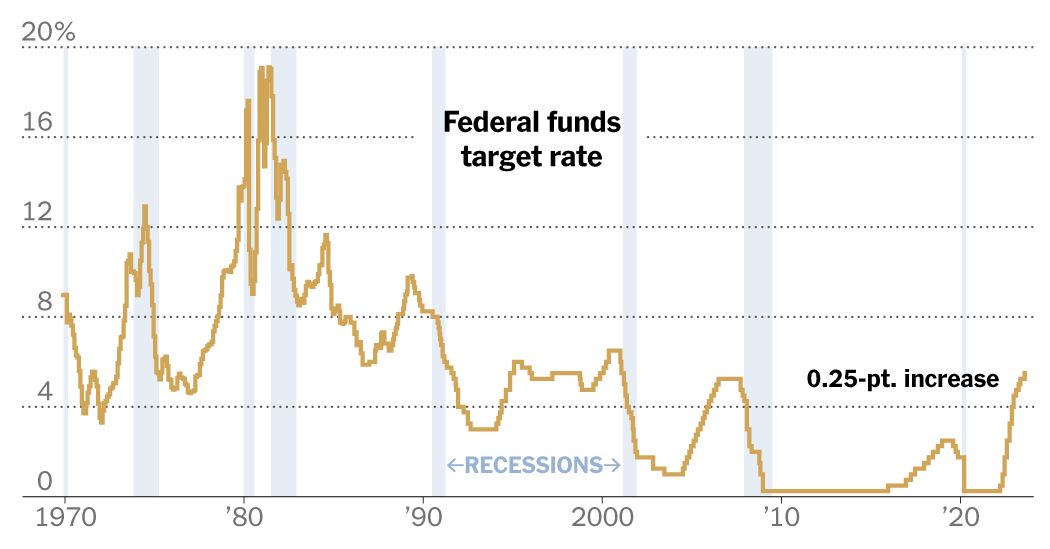Fed Raises Rates After a Pause and Leaves Door Open to More
Fed policymakers began to raise rates from near-zero in March 2022 and pushed them up rapidly last year before adjusting them more slowly in 2023, even taking a break last month. Because officials think rates are now high enough to weigh on the economy, they have been moving more gradually to give themselves time to see how growth, the job market and inflation are responding to the shift in policy.
Inflation as measured by the Consumer Price Index cooled in June to 3 percent from a peak of 9.1 percent, though it remains faster than that after stripping out food and fuel prices, which are volatile. The moderation has been welcome news at a time when the unemployment rate is hovering at 3.6 percent — a historically low level, and essentially unchanged from when the Fed began to push rates higher more than a year ago.
But inflation has previously slowed and then picked back up, and the Fed is not yet ready to take a victory lap. Mr. Powell said officials would be watching incoming data ahead of the Fed’s Sept. 20 meeting to decide whether they need to raise interest rates further at that gathering. He avoided explaining what precisely would prompt the Fed to either lift rates or hold them steady, noting that the Fed has eight weeks and a substantial amount of incoming data to review before it must decide.
“We’ve come a long way,” Mr. Powell said at one point. “Inflation repeatedly has proved stronger than we and other forecasters have expected — and at some point that may change. We have to be ready to follow the data and given how far we’ve come, we can afford to be a little patient as well as resolute as we let this unfold.”
Higher interest rates cool the economy by making it more expensive to borrow money, discouraging business expansions and making it costlier to take out a mortgage or a car loan. But it takes time for them to trickle through the economy, so the full effects of the moves so far most likely have not been felt. Policymakers want to make sure that they temper demand enough to put an end to rapid price increases, but they would prefer to avoid plunging the economy into a recession if they can avoid it.
Source: The New York Times


